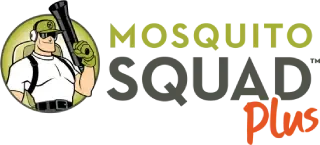Send Ticks Down The Tubes
Posted by Mosquito Squad
September 14, 2020

If you’ve ever tried to set boundaries between ticks and your yard, you’ve probably had tick tubes suggested to you. If you’re curious about how a small tube in the ground could get the job done, read on to learn more about how tick tubes work.
Tick tubes are biodegradable cardboard tubes filled with permethrin-treated cotton balls. They are EPA-registered, and they don’t come with an expiration date. The tubes indirectly kill off ticks by being appealing nesting material for mice. While deer catch a lot of the blame for harboring black-legged ticks, mice are actually the main food source for newly-hatched larva ticks and the primary host for Lyme Disease. When the mice line their nests with the cotton, they also get the insecticide on their body and fur, creating a potent cocktail for the ticks attempting to feed on the mice. The mice are unharmed, the ticks are killed off, and the odds of Lyme Disease carrying ticks brought to your property decreases.
Mosquito Squad technicians will place tick tubes around your property in the spring and late summer. The first application kills nymphal ticks that emerge in the spring and the second application kills larval ticks that hatch in late summer. Because mice breed quickly, we find that tick tubes are most effective when used in unison with the tick barrier treatment. Tick tubes are planted throughout your yard, under bushes, near woodpiles, and beside retaining walls, where mice will discreetly search for nesting material.
While you will find countless tutorials on how to make your own tick tubes, we advise against it. Pesticides contain supplemental products that help the active ingredient (permethrin) perform according to the label. Commercial tick tubes are perfectly suited for controlling ticks that feed on mice. Making your own concoction could deviate from this purpose and potentially cause harm to other wildlife. Also, it is illegal in many states to make your own tubes because the EPA will only register the use of a pesticide after rigorous testing has been completed to ensure it doesn’t pose a risk to people or the environment. For this reason, a DIY version will not be authorized or valid under government regulations.
Save your handyman skills for other projects around the home, and instead call the pros to help you ward off ticks. Contact your local Mosquito Squad today!
